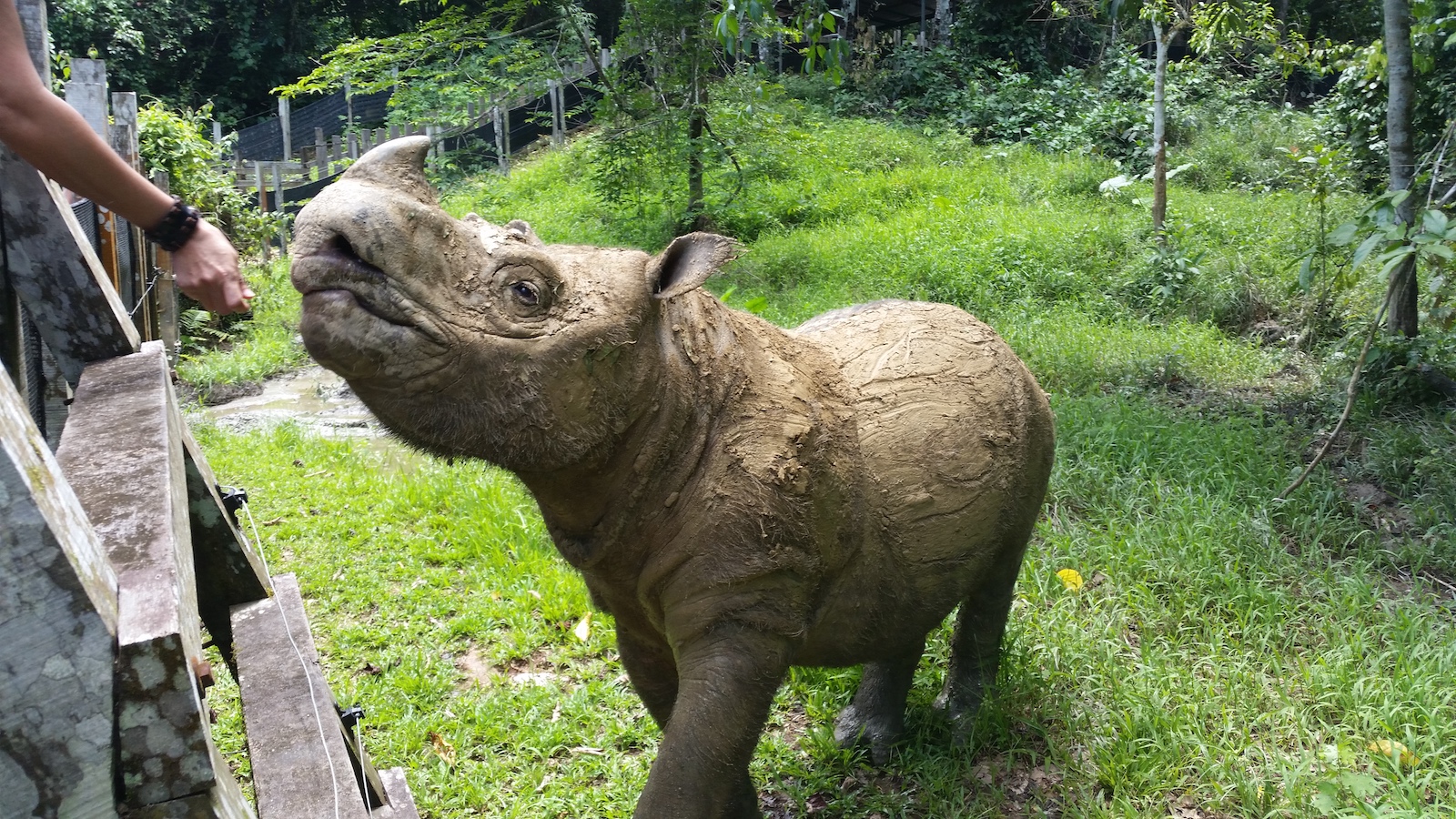Extinction Looms As Last Male Sumatran Rhino in Malaysia Dies

Malaysia's last male Sumatran rhino has died, leaving just one of the rhinos, a captive female, in the entire country, a region that was once replete with the two-horned beasts, news sources reported.
Wildlife experts in the country captured the male — nicknamed Kretam, or Tam for short — in 2008 on a palm oil plantation when he was about 20 years old, according to Mongabay.
Tam lived more than 10 years in Malaysia's Tabin Wildlife Reserve in Borneo and had several unsuccessful breeding attempts with two female Sumatran rhinos (Dicerorhinus sumatrensis). However, Tam's health took a turn for the worse in April, the wildlife department in the Malaysian Bornean state of Sabah reported. [In Photos: The Last 5 Northern White Rhinos]
The Borneo Rhino Alliance (BORA) confirmed Tam's death on Monday (May 27) in a Facebook post.
It's unclear why Tam's health deteriorated so quickly, but officials took notice when the rhino's appetite and alertness became lackluster, Augustine Tuuga, the director of the Sabah Wildlife Department, told The Star, a Malaysian news outlet. Urine tests indicated that Tam was experiencing organ failure, perhaps due to old age, Tuuga said.
The loss of the rhino is a severe blow to the survival of the critically endangered species. As many as 800 Sumatran rhinos lived in the wild as recently as 1986, but now fewer than 100 remain, with some estimates as low as 30, according to Save the Rhino, a London-based charity that works to protect rhinoceroses.
The Sumatran rhino is the smallest of the rhino species, weighing just over 2,100 lbs. (960 kilograms). In comparison, the white rhino, the largest rhino species, weighs about 5,000 lb.s (2,300 kg.)
Sign up for the Live Science daily newsletter now
Get the world’s most fascinating discoveries delivered straight to your inbox.
Sumatran rhinos have reddish-brown skin, sport two dark-gray-to-black horns apiece and are the hairiest rhino species. They are also fast and agile, easily able to climb mountains and navigate steep slopes, Save the Rhino reported. However, poaching and deforestation have drastically reduced the rhinos' numbers, CNN reported. Most of the world's remaining Sumatran rhinos live on the Indonesian island of Sumatra.
Now that Tam has died, Malaysia's last living Sumatran rhino is Iman, a female captured in 2014 for a captive breeding program, Mongabay reported. But Iman has never given birth, and she was found to have a ruptured tumor in her uterus in December 2017.
Another female, named Puntung, was captured in 2011. Puntung also had health problems, including multiple cysts in her uterus. Wildlife officials euthanized her in June 2017 after she developed skin cancer.
The Sumatran rhino has a relatively long gestation period of about 16 months. Adult females usually have a single calf every four to five years, Save the Rhino reported.
Though the most recent captive-breeding efforts of these rhinos have failed, there is a sliver of hope for the species. Biologists say that a mere 20 unrelated rhinos could provide enough genetic diversity to ensure the species' survival, the BBC reported.
- Up and Away! Photos of Rhinos in Flight
- In Photos: Borneo's Quirky Species
- Gallery: Mystery of the Pygmy Elephants of Borneo
Originally published on Live Science.

Laura is the archaeology and Life's Little Mysteries editor at Live Science. She also reports on general science, including paleontology. Her work has appeared in The New York Times, Scholastic, Popular Science and Spectrum, a site on autism research. She has won multiple awards from the Society of Professional Journalists and the Washington Newspaper Publishers Association for her reporting at a weekly newspaper near Seattle. Laura holds a bachelor's degree in English literature and psychology from Washington University in St. Louis and a master's degree in science writing from NYU.









